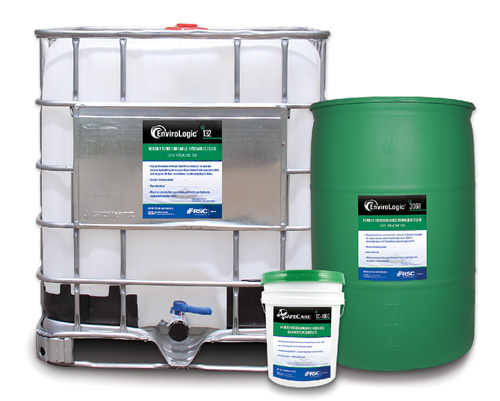
RSC’s XEnviroLogic 132 is a biodegradable oil that offers safety and performance benefits when used in the hydraulic pitch control mechanisms of wind turbines.
By one estimate, 80% of all breakdowns in lubricated machines are related to pollutants in the oil. Even in small amounts, contaminants can increase operating costs associated with maintenance, downtime, or equipment replacements. Enough particles measuring only 1-μm in size (invisible to the human eye) can knock out a 20-ton gearbox.
The solution: rigorous particle contamination control. Ideally, this process should begin well before a gearbox is ever placed into service. The interior gear housings should be painted with an epoxy sealer to provide a smooth surface that’s easy to clean and that seals in debris, such as casting sand. Prior to assembly, all components should also be properly stored in a clean, dry area.
Common sense says that a better filter can lengthen equipment life and research bears this out. For instance, upgrading the filtration system of a gearbox can significantly increase gear and bearing life (some have reported by up to six times or more). What’s more, gearboxes are often equipped with inadequate filtration systems.
In a 2014 article, oil filtration experts C.C. Jensen pointed to a possible industry misunderstanding that inline filters are enough to keep gear oil clean. They site findings that show the addition of offline filters can extend component life by at least 50%, doubling gear oil life. An offline filter uses a low-flow pump to continually circulate and purify oil. Although like many things in life, it’s most effective when used with consistency.
Filters are an important line of defense against contamination, but the type of oil used is also significant. It has been referred to as the “lifeblood” of a turbine, affecting everything from the bearings to the generator. Most gearboxes failures are preventable and are a direct result of improper lubrication and lack of routine maintenance.
Lubricants vary per component and are usually designated by the manufacturer. An important choice for a turbine owner, however, may be whether the oil is synthetic or mineral-based. Though often more costly, years of research has continued to demonstrate that synthetic oils offer better viscosity-temperature characteristics and provide better wear protection.
This is important when considering the ambient weather conditions lubricants must perform in. For example, freezing temperatures can cause high-lubricant viscosity, leading to filter failures and, ultimately, turbine shutdowns. Conversely, a strong, continuous output can generate high gear-oil temperatures, which at extremes can also lead to equipment breakdowns.
Finding balance is imperative to successful turbine operation and, today more than ever before, lubricants are available that optimize a variety of traits in one product. One of the latest gearbox lubricants on the market is formulated to provide component protection over long oil-drain intervals, and offers an industry-first, seven-year warranty. Considering the fact gearboxes are lucky to make it to five years, a lubricant guaranteed to work past that time holds an enormous cost-saving potential. Another plus: extending oil-drain intervals means reducing oil maintenance and the associated maintenance costs in remote, often harsh conditions.
Recently, interest in non-toxic, biodegradable lubricants has been growing, which seems only fitting. It’s been estimated that most early turbines, including up to 90% of those in Europe, use mineral oil, which is non-renewable and non-biodegradable. This is changing with the latest synthetic lubricants hitting the wind market that provide bio-based solutions. Most still promise long-lasting anti-wear and corrosion-resistance, often with an additive package.
Along with environmental concerns and risk of leakage (a single turbine may contain some 200 gallons of oil), a benefit of synthetic lubricants not often discussed relates to safety. For instance, lightning strikes or electrical malfunctions have the potential to ignite oil in a turbine, a potential that elevates with standard, mineral-based products. Synthetic lubricants, however, often offer a higher flash point with lower volatility, providing a worthwhile safety margin.WPE
Filed Under: Hydraulics, Lubricants, O&M



